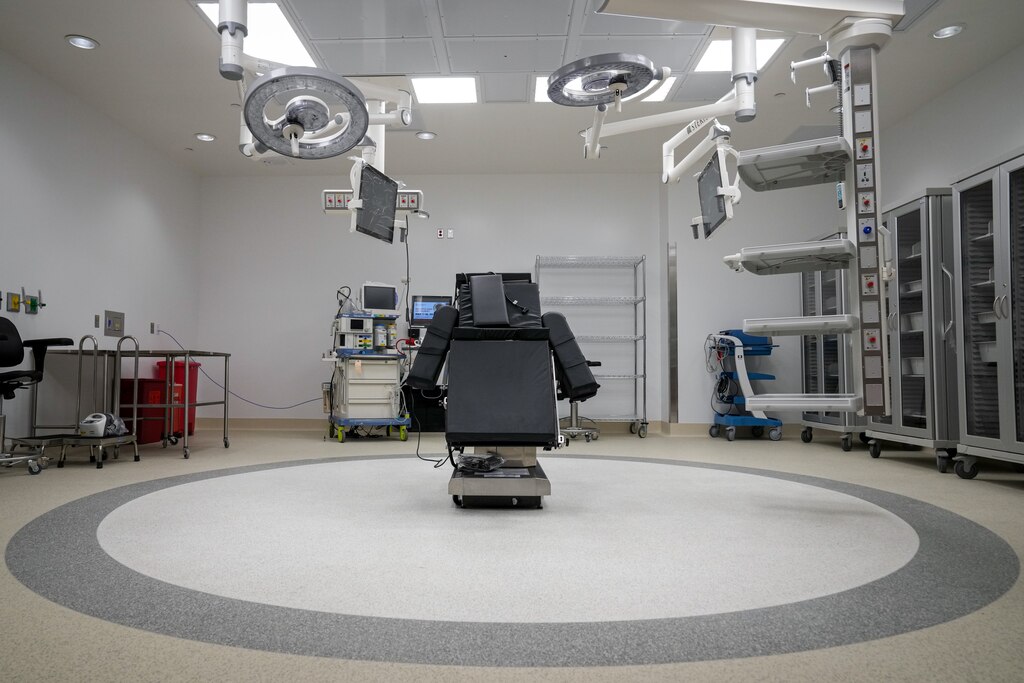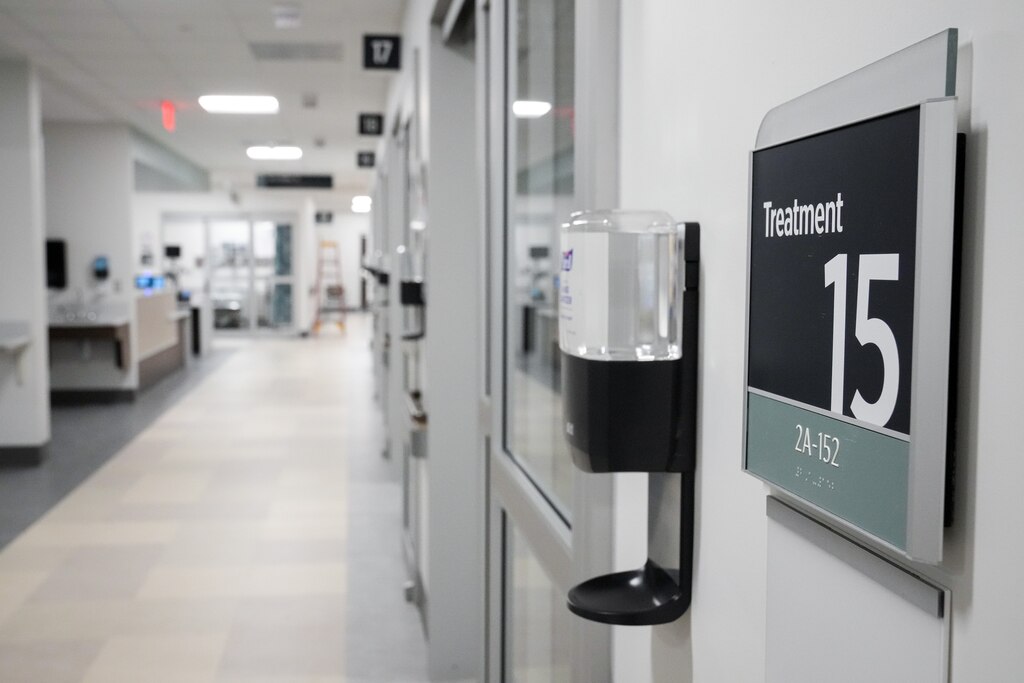There are sparkling new examination areas, emergency bays and operating rooms in the new Laurel Medical Center, as well as places for imaging and behavioral health care.
They are all just waiting on one thing: patients.
Come June 4, the plastic covers will lift and construction crews will move aside. People will take their first steps through the automatic glass doors of the two-story, nearly 84,000-square-foot center replacing the aging former hospital next door.

“This will be a full health and wellness campus for the city of Laurel and beyond,” said Nathaniel Richardson Jr., CEO of the University of Maryland Capital Region Health, which includes the new center about halfway between Baltimore and Washington.
“The only difference,” he added: “It won’t have full inpatient care.”
The old center had already transitioned from a traditional full-service hospital to an outpatient center by 2019. That wasn’t too long after the Maryland system took over several Prince George’s County health facilities from Dimensions Healthcare System with millions in state subsidies.
The move to drop impatient beds had been announced years before by a financially struggling Dimensions to howls of protests from local politicians and area residents, many of whom began seeking care elsewhere as services declined. (Some beds did temporarily reopen in 2020 as part of then-Gov. Larry Hogan’s emergency COVID-19 preparations.)
Success of the new center under the University of Maryland Medical System banner will hinge on luring back Prince George’s residents who now get their hospital and outpatient services in nearby Montgomery, Howard and Anne Arundel counties. It may even require some of the residents of neighboring counties to come the other way.
“We’re using the term health and wellness intentionally,” said Min Godwin, chief operating officer of the UM Capital Region Health, about the strategy to build a state-of-the-art campus of needed and desired services. “We meant to create a campus providing primary and subspecialty care for people in Laurel and up and down the [Baltimore-Washington] corridor.”
People will come for care in obstetrics-gynecology, heart and cancer care, neurology and behavioral health, in addition to emergency and surgery services, said Godwin, while on a tour Monday for news media ahead of the center’s ribbon cutting.
Anyone needing higher-level care or inpatient services will go to the regional flagship hospital in Largo in a “hub and spoke” model, which the University of Maryland Medical System also has adopted in other parts of the state.
The center will move a staff of almost 200 from the existing center plus hire more professionals to accommodate planned growth. Godwin said officials expect emergency cases to rise by about 15% and surgery patients to double.

Some are optimistic that the new center, though not a traditional hospital, can still win over residents by providing near full-service hospital options. Federal rules allow patients to stay for up to 72 hours of time on “observation” status.
State Sen. James Rosapepe, a Democrat who represents Prince George’s and Anne Arundel counties, has long been an advocate for health care services across the county and was among those who had protested the change to outpatient-only services in Laurel.
He said he would have preferred a full-service hospital in Laurel, a city of about 25,000, given the distance to the University of Maryland Medical System hospitals in Largo and Baltimore. But the new center is “pretty close to a full-service hospital,” so many needs will be met and fears about a huge lack of services “are unlikely to be realized,” he said.
“This is a great market for a hospital, and only because of mismanagement of the Laurel hospital for years did they lose customers to Howard and other counties,” he said. ”Getting them back will be huge.”
Joshua Nemzoff, president of Nemzoff & Company, a Pennsylvania-based consultant on hospital mergers and acquisitions, agreed an outpatient facility could serve most purposes.
“Everyone wants to be 15 minutes from a 400-bed, full-service hospital,” he said. “But the fact of the matter is most people don’t need to be 15 minutes from all those services; you need to be 15 minutes from emergency care. Laurel will have emergency care.”
Emergencies, such as car crashes or heart attacks, are how many area residents will end up there. They will come for an emergency and stay for labs, imaging and surgery.
But people get to medical centers two ways — through the emergency room or by referral from their doctor. Those who have found doctors in other health systems that funnel patients to other hospitals and surgical centers may not return. And that will be the heart of the challenge.

“It’s tough to change those referral patterns,” he said. “You see your doctor and he sends you somewhere to see specialists he likes or in his system.”
Laurel will have to make it clear it’s “available, affordable and accessible” to doctors and patients, he said.
Officials said they recognizes this and have been busy building relationships with area primary and specialty doctors.
The center also has been working to hire more people to work directly for the new center, to complement staff like Gloria Oniha, Laurel’s director of nursing and operations, who have worked at the Laurel center for decades and have community relationships.
“We’ve had a very stable staff, and we’re adding primary and subspecialists,” Godwin said. “We’ve been seeding the center for the last three years.”



Comments
Welcome to The Banner's subscriber-only commenting community. Please review our community guidelines.